Since the dawn of mankind on Earth the planet has changed so dramatically, caused both by Mother Nature’s relentless energy to twist, turn and flip the world’s tectonic plates, volcanoes, skies and oceans, and humans’ insatiable demand for resources. So often we hear that the only constant thing in the world is change, therefore those who survive are the ones who are able to change and adapt to new challenges.
However another constant thing in life seems to often be overlooked by most of us: the battle between good and evil. History proves how the two eternal forces always balance each other out, like yin and yang.
Germany is not always known for its enviable advancement in technology, supported by sound and efficient economy, but many remembers it as a country where one of the world’s greatest evils had painted a very dark chapter in history. Iraq, on the other hand, was not always a perilous and unstable land. At the time when Europe was engulfed in inquisitions, Baghdad produced progressive-thinking scholars who introduced new thoughts to the world like algebra and perfected ancient wisdom and sciences which would later provide a strong foundation for Renaissance movements in Europe.
There is no guarantee that things would remain at one side forever. There is no guarantee that a good man would always be good, and a bad man would remain so for the rest of his life.
The same philosophy had inspired the Balinese to create a dance richly loaded with symbolism of the eternal battle between good and evil: the Barong dance. The mythical beast – often takes shape of a lion among other less-known forms of a tiger, a boar and a dragon – is considered a protective spirit of the island, a tradition dating back from the pre-Hindu period. A Barong is usually decorated with gilded leaves, fragments of small mirrors and voluminous dried ijuk (palm fibre) to create a formidable figure representing virtue.
On the other hand Rangda is attributed to evil spirits, instilling fear and inciting chaos among Balinese with her menacing appearance – a demonic figure with sharp nails and a long unfurled tongue. Her origin can be traced back to the time when King Udayana from the House of Warmadewa ruled Bali in the 10th century.
During his rule, the Balinese king married a Javanese princess, Gunapriyadharmapatni, from the Medang Kingdom – the same kingdom which left magnificent 9th century temples spread across Java as its legacies. The marriage instigated suspicions from the Balinese royal court upon their foreign consort queen’s ambition to include Bali in the realm of the Javanese kingdom.
Gunapriyadharmapatni, later known as Mahendradatta, introduced the worship of Durga, a goddess in Shaktism school of Hinduism often associated with death, in her new land. King Udayana himself later condemned his wife for practicing black magic and banished her from his kingdom. Enraged, humiliated and disappointed, Mahendradatta then summoned all the evil spirits on the island to avenge her and kill everyone in the kingdom. Rangda, Old Javanese for widow, since then has always been associated with evil.
The Barong dance portrays the battle between Barong and Rangda including sequences where the demon queen relentlessly attempts to turn people away from virtue. The finale shows Balinese men with their keris – a traditional dagger – attempting to defeat Rangda, only to meet their own demise for the evil queen was much too powerful. Barong eventually resurrects them and expels Rangda, forcing her to flee and move to the forests on the island. Peace returns to the village, but the mighty Barong does not kill the demon queen, epitomizing a reality in the world where there will always be virtue and evil, constantly battling each other.
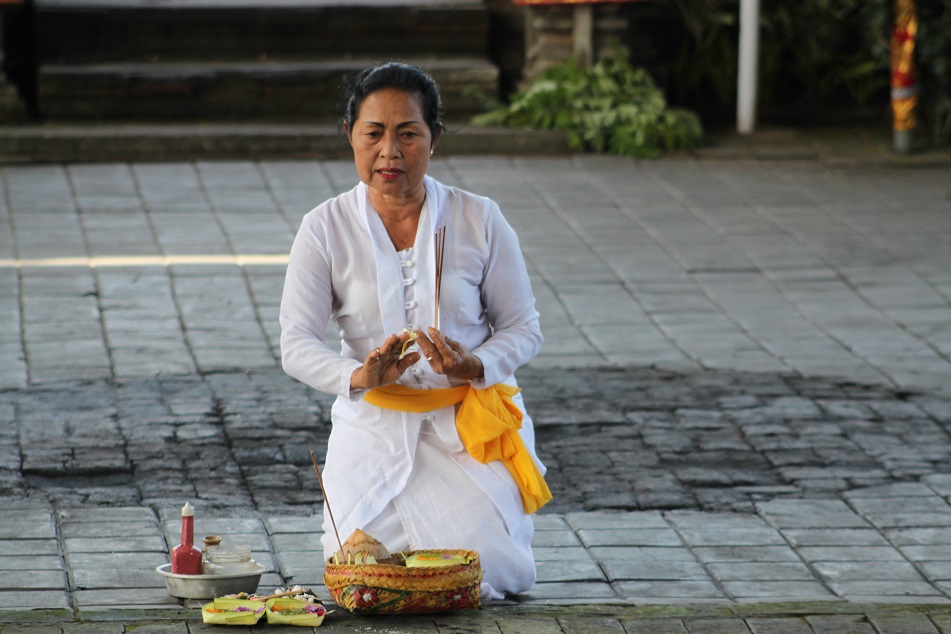
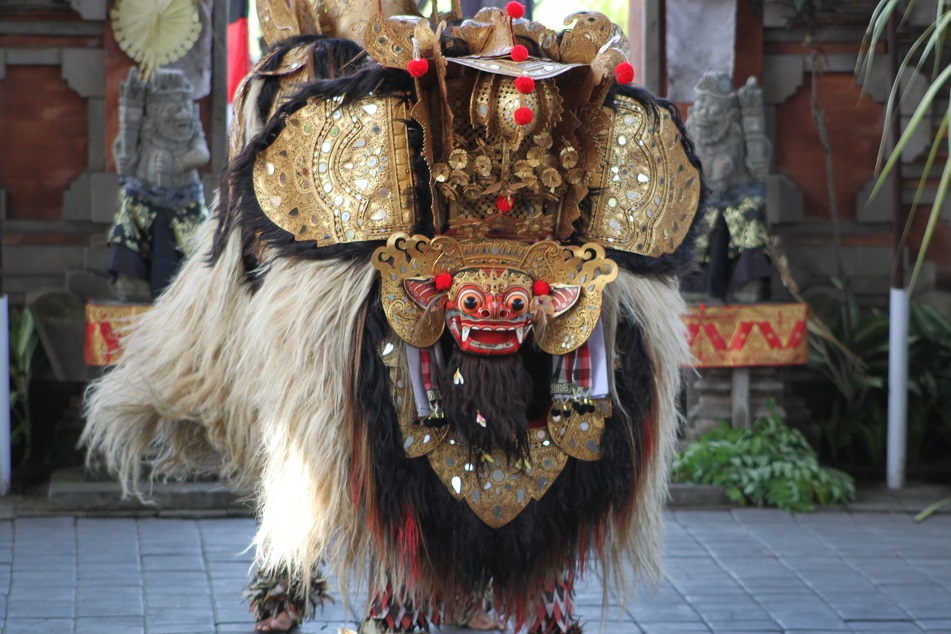

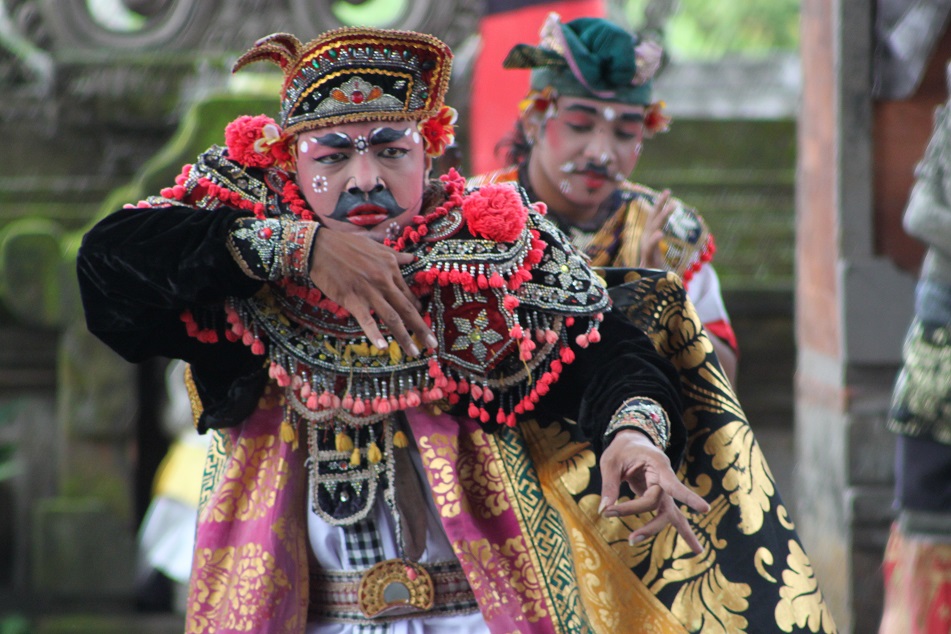
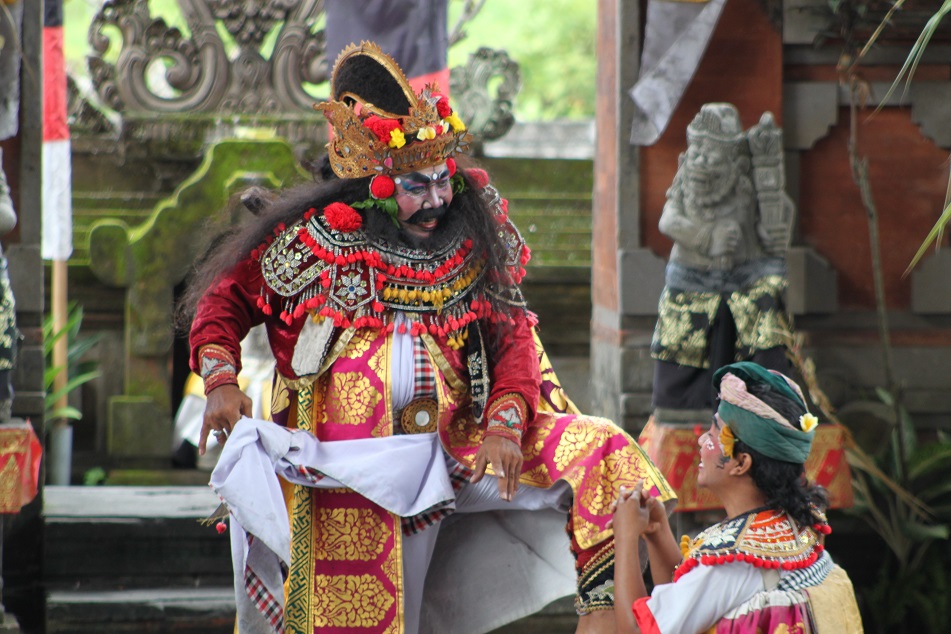

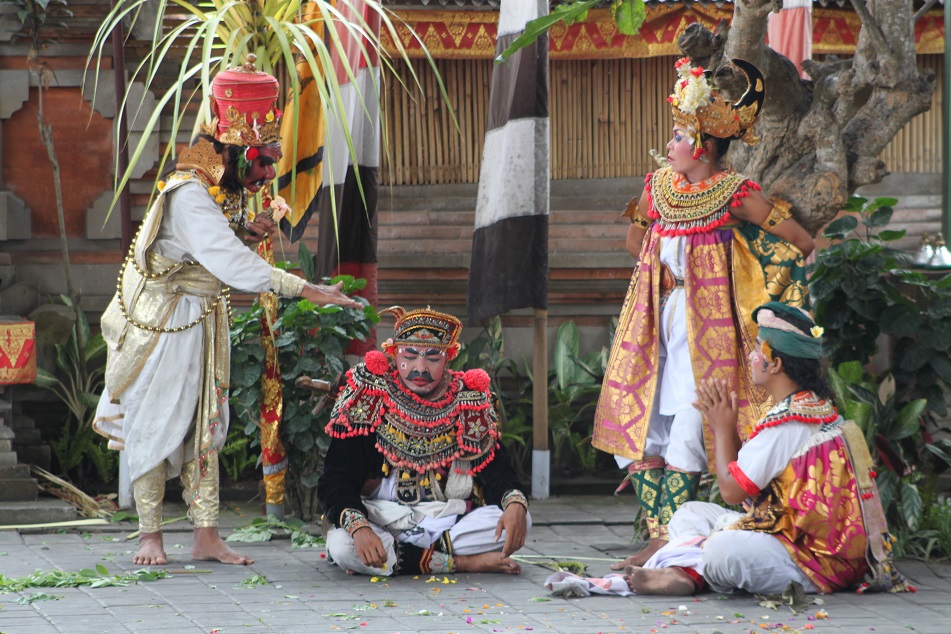
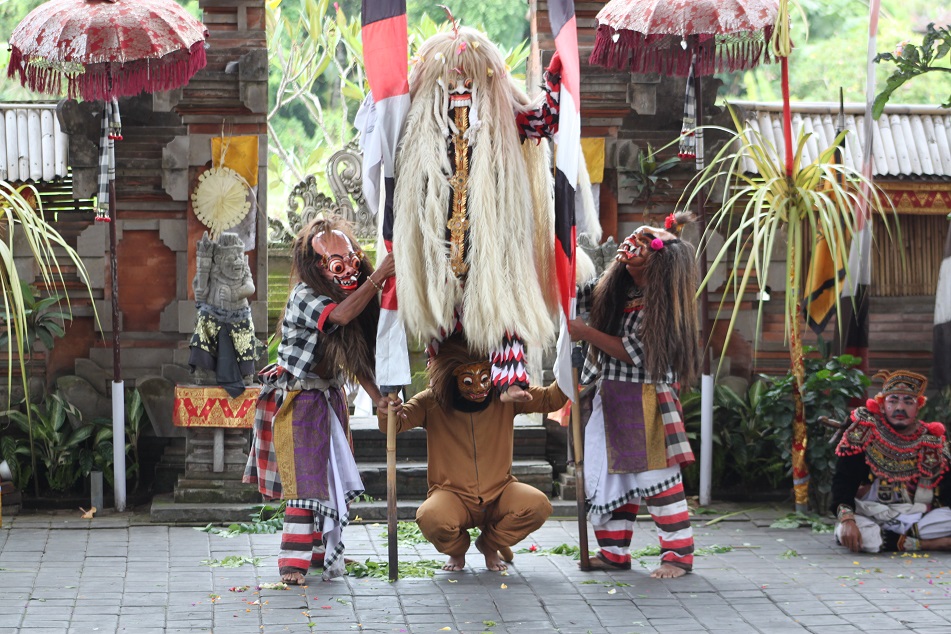
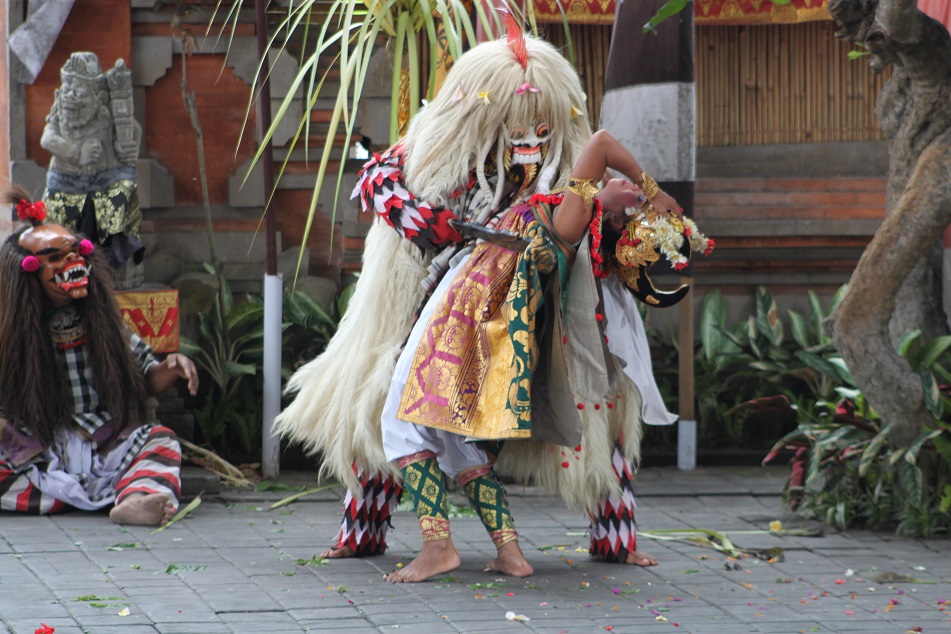
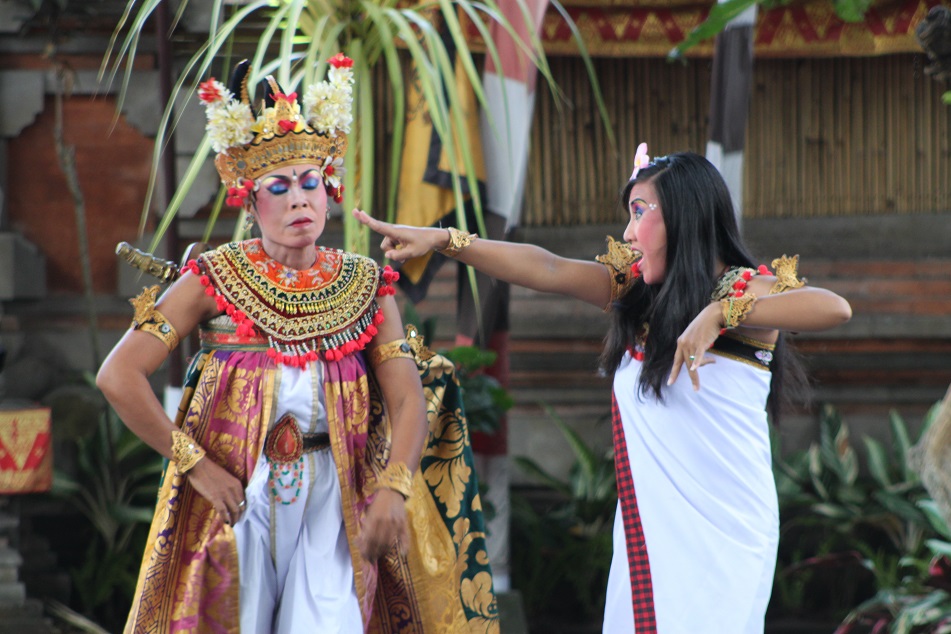

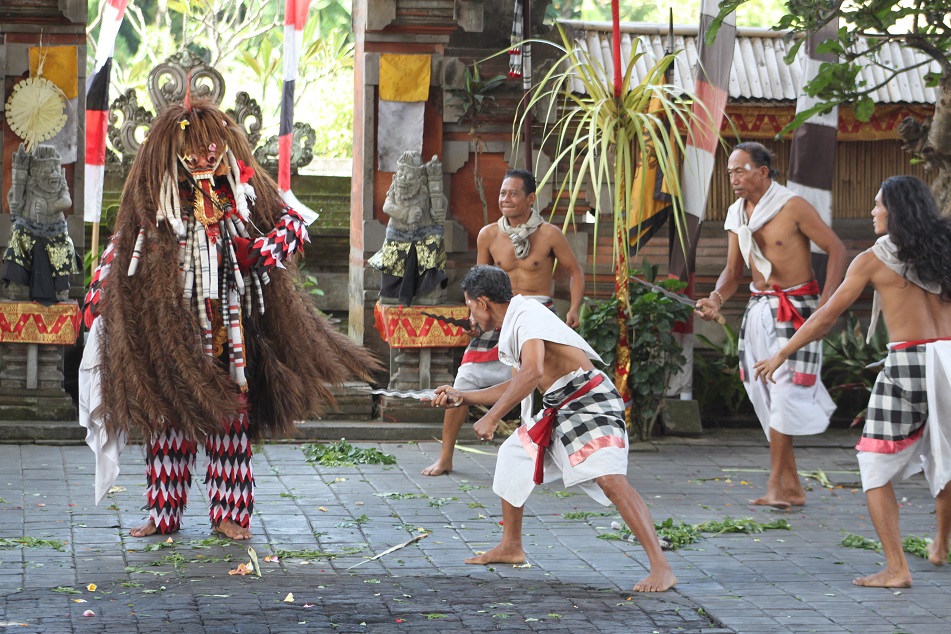
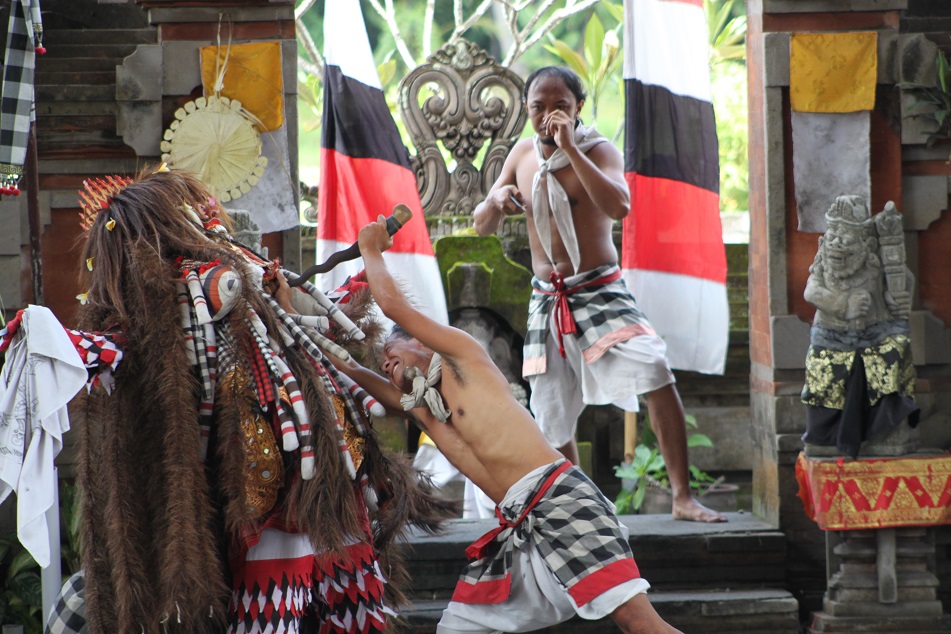
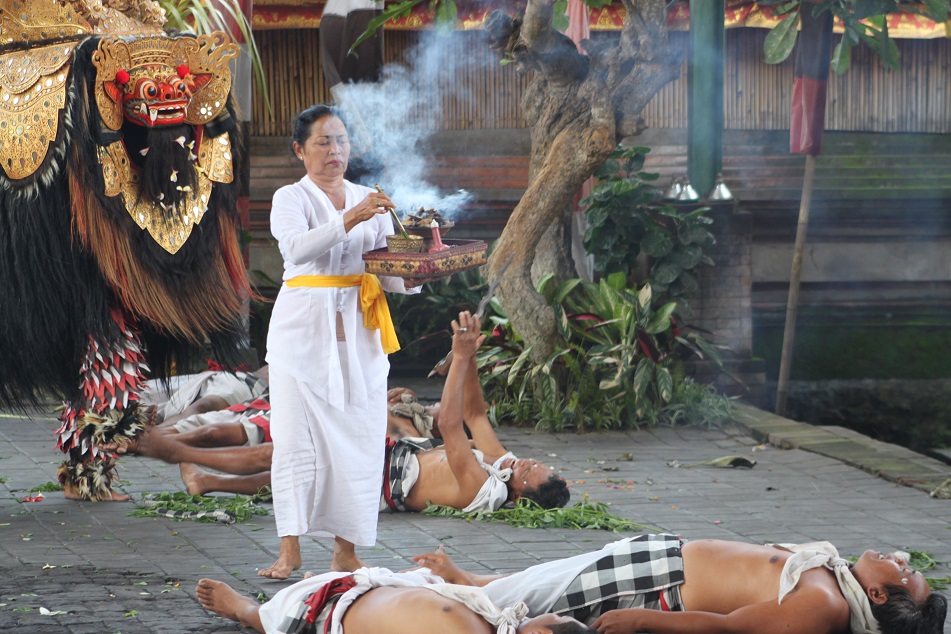
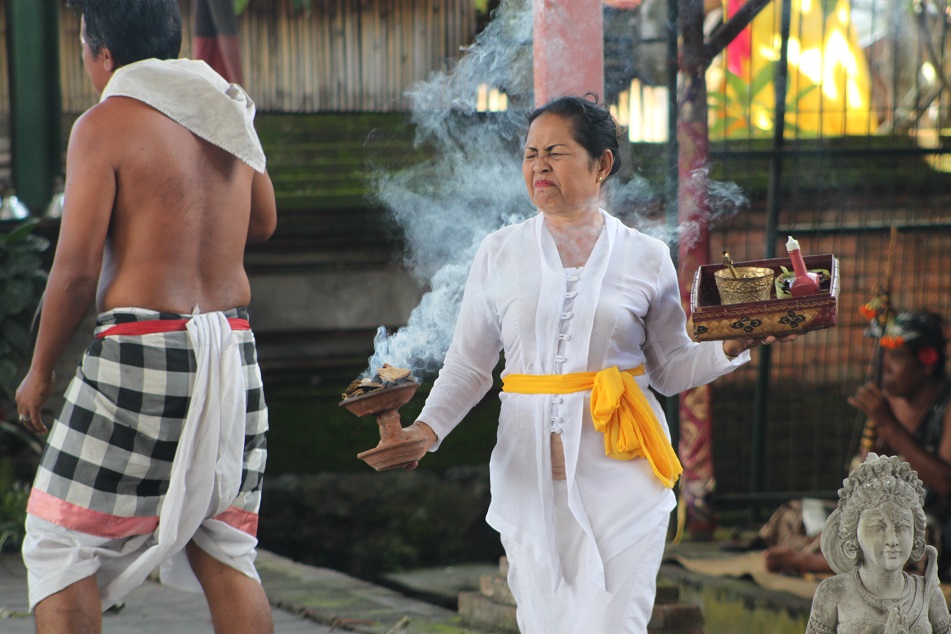
Such an informative post – thank you! I love watching Balinese dancing, it is so expressive and symbolic.
LikeLike
Hi Jenny. My pleasure, and thank you for reading. Balinese people really know how to make elaborate and beautiful art, including dancing. Barong and Legong are my favorites.
LikeLiked by 1 person
Thank you for this! It brought back some wonderful memories of our time in Bali and an evening seeing the Barong dance. I was completely enthralled having never seen anything like it before. Gorgeous costumes, and wonderful pantomime and music.
Thanks for the excellent explanation of the story and your beautiful photos.
Alison
LikeLike
Hi Alison. The pleasure is all mine. I was, too, captivated when I watched a Balinese dance performance for the first time. It was unlike anything I’d ever seen; the ornate costume and intriguing dance movements left me in awe.
LikeLike
informative, rich and valuable of other culture!
LikeLike
Thank you, Mihran. Learning about other cultures is one of the reasons why I travel. The world is one fascinating place, indeed.
LikeLike
I appreciate your reply. Here is my latest post and my musical clip
http://kmihran.wordpress.com/2014/10/19/mihran-kalaydjian-performing-she-left-me-alone/
LikeLike
Love the photos, Bama 🙂
LikeLike
Makasih, Wien. Btw I can’t help to not sing every time I read your blog’s name. 🙂
LikeLike
Haha.. Thank you. But mine is “forthefirsttimeandforever” not “forthefirsttimeinforever” :p
LikeLike
I know, but still. 🙂
LikeLiked by 1 person
Well, you’ve to Bama 😉 Thanks!
LikeLike
You sparked my interest! Definitely will be looking up Barong dance videos, haha. And nice photos, thanks for sharing!
LikeLike
There should be quite a few videos out there I believe. Thank you and I’m glad the photos tickled your curiosity. 🙂
LikeLike
Very nice.
LikeLike
the name of dance barong dance the perfomance start in the morning ay 9.30 until 10.30
LikeLike
hi Bama….impressive story behind this Barong dance. I left Indonesia long long time ago in the 80’s….. i almost forget all about this magical stories in Indonesia… yes, what a shame!
By the way i enjoy so much to read your post. I suppose you could be very good writer as well …..you are already! what i mean is writing a novel, triller, history romance, travel romance, whatever! it’s just suggestion ;;))) ok, fika bem ( “stay well” in cabo verde crioul ).
LikeLike
Hi Prem. Wow, so it’s been more than two decades since you left Indonesia. So many things have changed, but some remains like how they used to be. You should plan a nostalgic trip to Indonesia one day and see if you still notice a couple of things. 🙂
You’re just too kind, Prem. I do enjoy writing as much as I enjoy traveling itself. So it’s really nice to know that someone living in a place as far as Cape Verde appreciates my work. Fika bem! 🙂
LikeLike
Gorgeous photos, Bama! You certainly captured some at exactly the right moment – like the one in which Rangda tries to kill Sadewa. And I couldn’t help smiling at the humour in your final shot… her expression is priceless! 🙂
LikeLike
Thank you, James! As you know, trying to capture the right moment resulted in hundreds, if not thousands, of photos. 🙂 I was lucky to notice the priestess’ expression toward the end of the performance.
LikeLike
Reblogged this on Just Go Places and commented:
An explanation of a Balinese dance
LikeLike
I have seen the exact same performance in Bali this summer! Great photographs!
LikeLike
It’s such a wonderful performance, isn’t it? Balinese traditional dances never fail to impress me. Thank you, Lyubena!
LikeLiked by 1 person
Great post with awesome photography
LikeLike
Thank you so much for your kind words. I was particularly impressed with the ornate costume and elaborate movements. Truly an amazing spectacle.
LikeLike
Yeah right…keep going & touch the world 🙂
LikeLike
The same wish goes to you too! 🙂
LikeLiked by 1 person
I like your photo story! Colorful and enthusiastic! 🙂 Kamila
LikeLike
Hi Kamila. Many thanks for that! I know you would enjoy watching Barong performance as well. 🙂
LikeLiked by 1 person
Such an interesting post and amazing photos.
LikeLike
Hi Vinnieh. Thank you! I’m glad you enjoyed this post.
LikeLike
Hi Bama, It’s so true that thosewho are good today can be evil tomorrow or vice versa. It’s fascinating to learn about the dance of Barong and I thoroughly enjoyed reading the tale about the oirign of Rangda. The costumes of the dancers look so colorful and really spectacular. it must be amazing to watch it in person. How long is the dance?
LikeLike
Hi Marisol. The performance was around one hour, a typical duration for most Balinese traditional dance performances since now they are better fitted for tourists. However the original version normally takes longer. You really should watch those dances when you come to Bali one day, Marisol. 🙂
LikeLike
Your writing and photography is beautiful. Thank you!
LikeLike
Thank you very much, Mr and Mrs Gate. 🙂
LikeLiked by 1 person
This reminded me of a all Tibetan settlement In India where they have a similar dance performance!
LikeLike
Wow, it really sounds intriguing! Is it the ones in and around Dharamsala or also in other parts of India?
LikeLike
WOW. what beautiful imagery…i really enjoyed this post! Great work.
LikeLike
Thank you, Ryan. It’s always nice to know that people who live halfway across the globe actually enjoyed the stories on my blog. Hi Oklahoma! 🙂
LikeLiked by 1 person
Hahah i dont live in Oklahoma by choice…military…but it says hi back! Lol
LikeLike
Ahh, I see. Well, hi to your hometown too! 🙂
LikeLiked by 1 person
haha no worries! home town isn’t any better than Oklahoma.
LikeLike
Love this blog! Favorite one on Word Press I’ve seen thus far. Makes me want to hop on a plane right now!
http://www.abouta20something.wordpress.com
LikeLike
Hi Nica. That’s very kind of you to say. It’s really encouraging to know that people are actually inspired to pack their bags and travel after reading my travel stories. 🙂
LikeLike
Thank you for sharing this amazing story and incredible photographs. Looking forward to reading more.
LikeLike
Hi Jennifer. The pleasure is mine. Thank you for your kind words! 🙂
LikeLike
Very nice blog, Bama. We love it as much as we love Indonesia. Cheers. 🙂
LikeLike
Hi guys! Thank you so much, it’s really one of the most underrated destinations on the planet, isn’t it? Although we do see a steady increase in foreign visitor arrivals these years.
LikeLike
Pingback: Temples, tastes and heavenly beauties of Bali | maverickbird
A fascinating and colourful photo series Bama! Love how stories from Hindu mythology have morphed into something intrinsically home grown. The last shot made me smile 🙂
LikeLike
That’s what I always thought every time I visited Bali. Balinese people absorbed Javanese Hindu culture which itself was a marriage of local interpretation of Hinduism and Indian cultures, then further transformed it into something very unique. I guess when you go to Bali you’ll notice some familiar things, yet distinctively Balinese. I was lucky to be able to take that last shot just in time! 🙂
LikeLike
Beautiful photos! Bali is one of my favorite places.
LikeLike
Hi Ema. It is too for me, and I don’t think I will ever get bored of it.
LikeLike
Reblogged this on maverickbird.
LikeLike
Pingback: Pura Singapadu: Beauty in Details | What an Amazing World!
Such an interesting story, Bama! Is the Barong only worshipped in Bali? Based on your descriptions, Rangda sounds similar to Hel, the goddess of chaos in Norse mythology. Perhaps there was a cultural exchange here 🙂
LikeLike
Actually the Balinese don’t necessarily worship Barong — it is more like a symbol of virtue and good forces. Today Barong only exists in Bali, but I wouldn’t be surprised if in the past, when Java was still predominantly Hindu, there was something like Barong on Bali’s neighboring island. I’m not sure if there were cultural exchanges between the Balinese and Nordic people; similarities between two distant cultures can indicate past exchanges as well as occur independently from each other. But thanks for bringing this up! I might want to look further into it when I travel to the far north of Europe one day.
LikeLiked by 1 person
Perhaps you are right. Similarities between cultures might occur independently. For example, there is a Vietnamese folk tale that resembles the story of Cinderella in many details. But cultural exchange between the West and Vietnam (or Annam at that time) didn’t exist until the arrival of Marco Polo 🙂
LikeLike
Exactly. I’m not sure that there were contacts between the Ancient Egyptians and the Mayans. Yet, both societies built impressive pyramids, with their own distinctive style. Nevertheless, traveling helps unveil such facts, which in turn helps us see the world with a broader and less judgmental perspective.
LikeLiked by 1 person